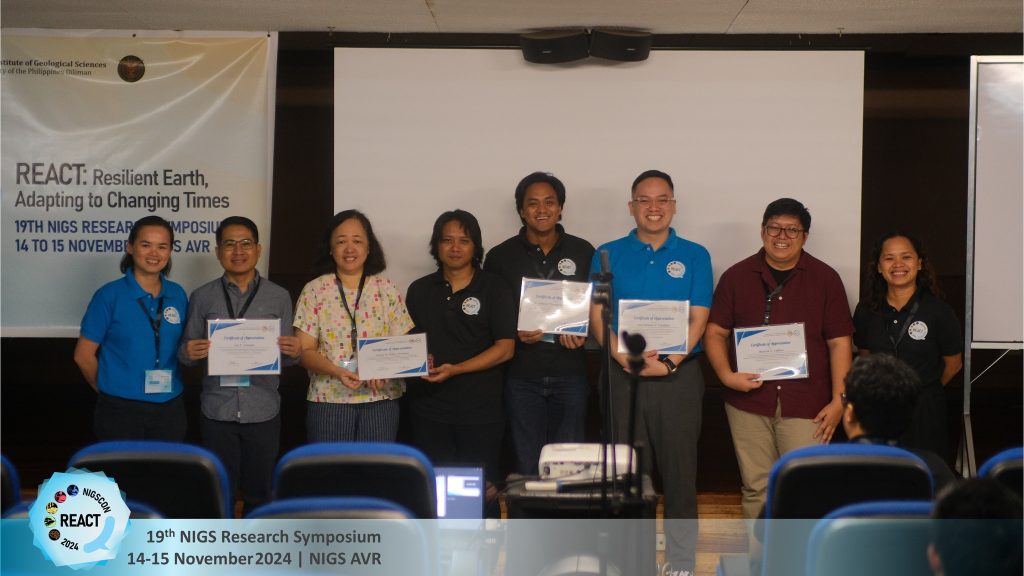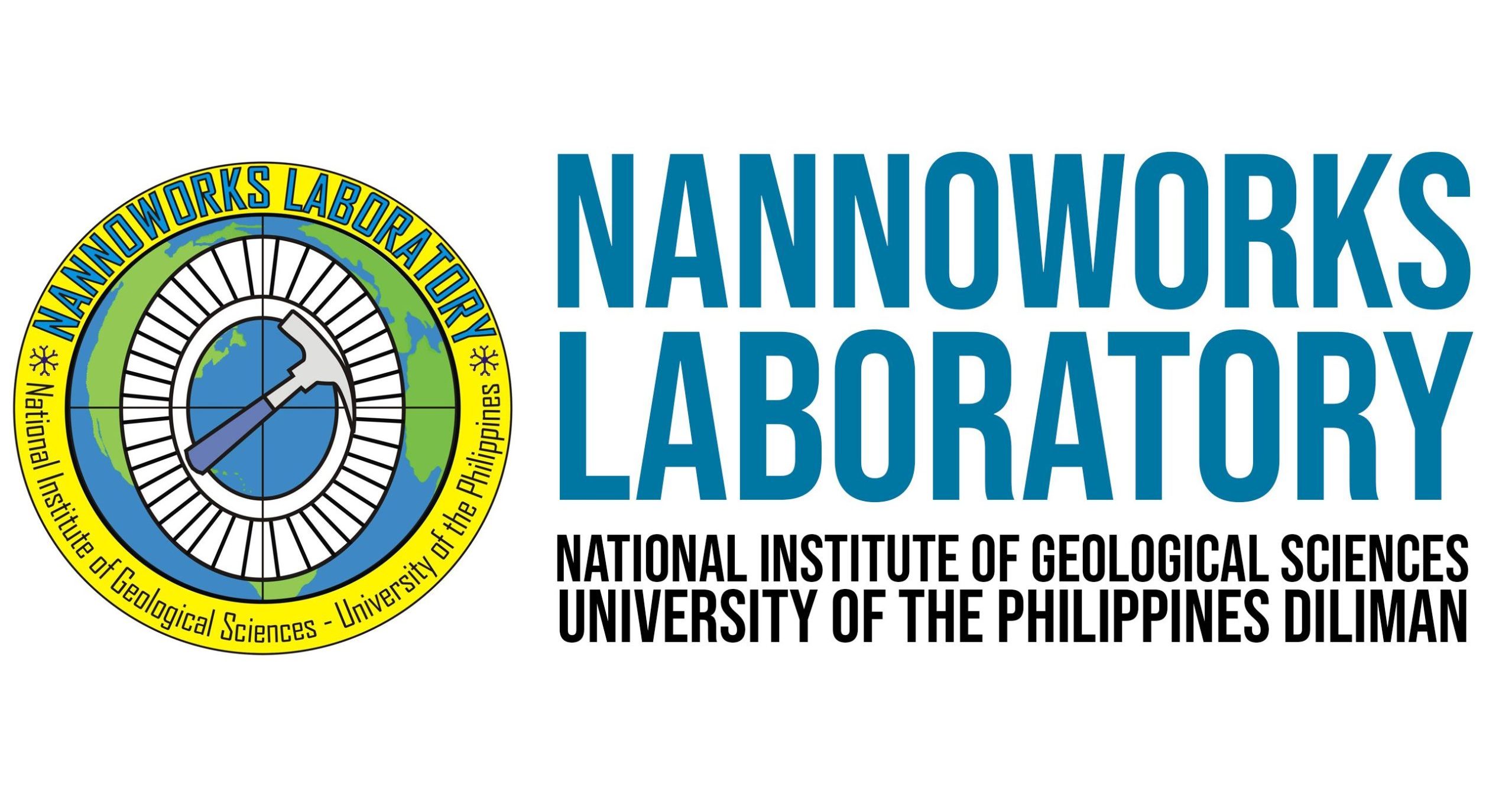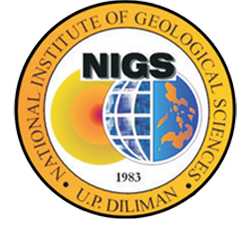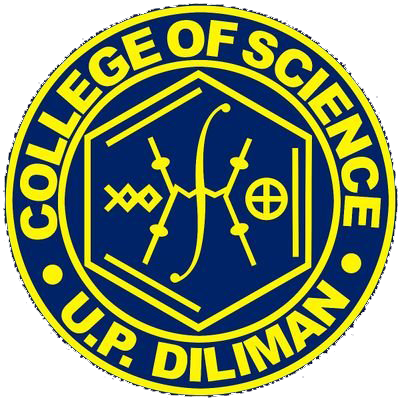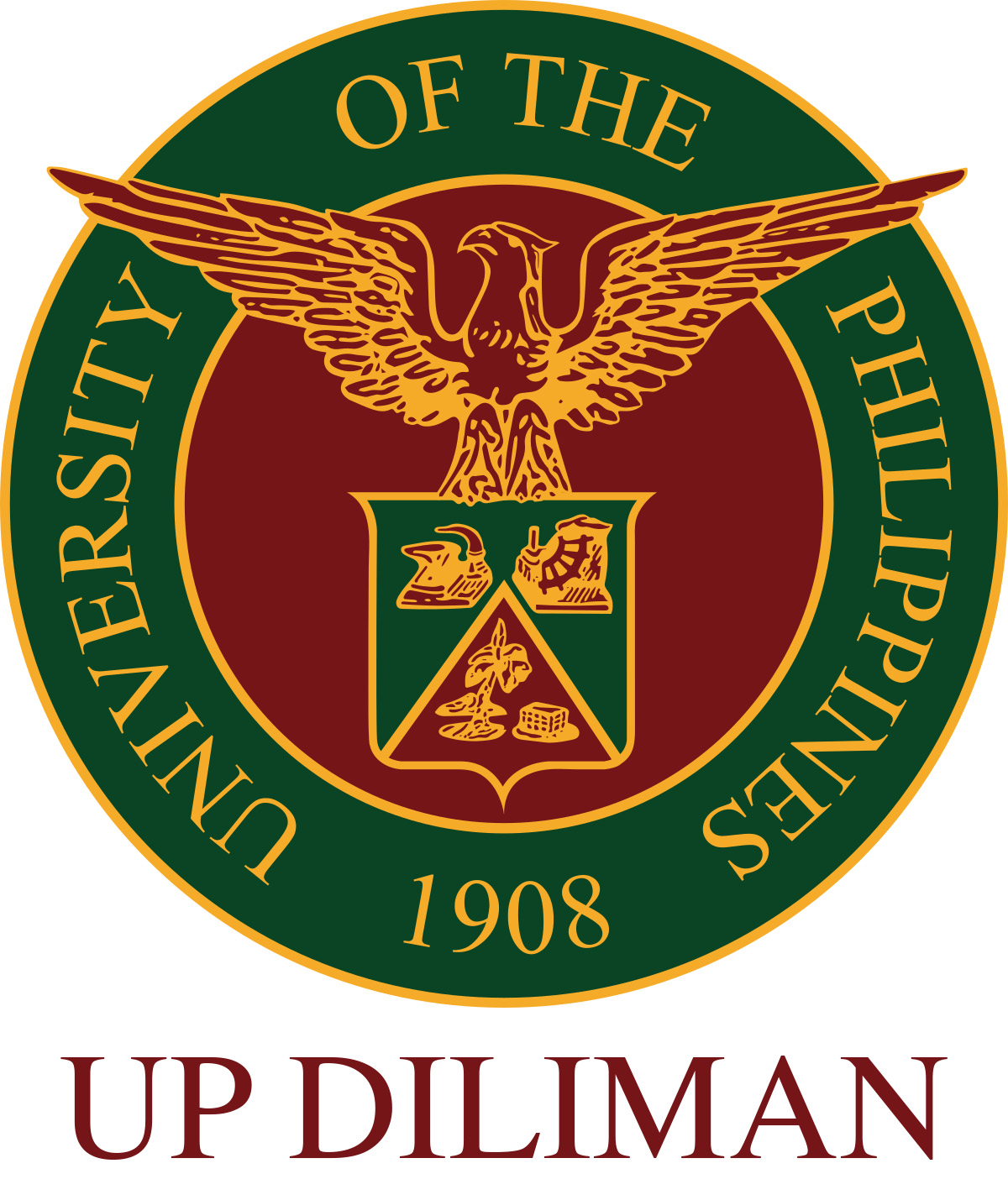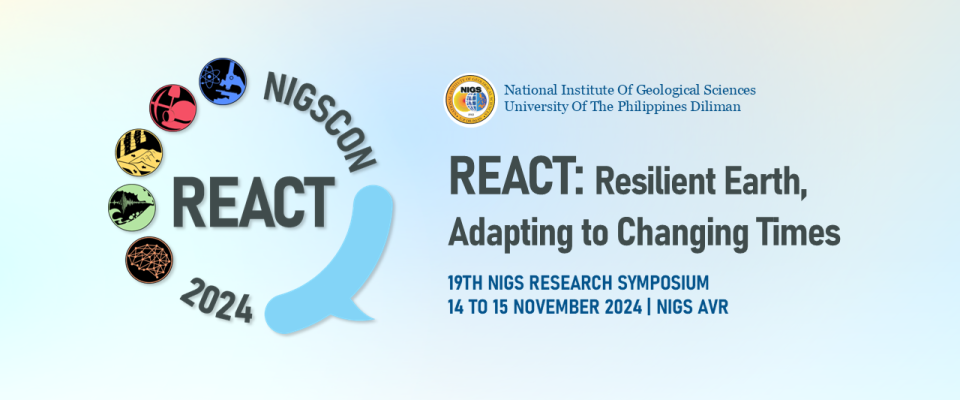Members of the Nannoworks Laboratory actively participated in the recently concluded 19th National Institute of Geological Sciences Research Symposium (NIGSCON) on November 14–15, 2024. Results of ongoing and completed research projects, as well as MS Thesis topics, were presented during the 2-day event. Dr. Alyssa Peleo-Alampay and Mr. Joeven Austine Calvelo discussed their study“Survey of Surface Sediments for Coccolithophore Transfer Function Study for the South China Sea”, the research aims to check the availability of nannofossil abundance data from surface sediment studies in the South China Sea for the eventual development of transfer functions. Dr. Allan Gil Fernando and Mr. Antero Borja II presented “Calcareous Nannofossil Distribution in the Surface Sediments of the Gulf of Thailand”, comparing recent nannofossil distribution with studies in the gulf almost half a century ago. Mr. Meyrick Tablizo shared his research on “Reexamining the Stegodon Collections of Museums in Luzon: A Comprehensive Morphological Analysis”, shedding light to past distribution of proboscideans in the Philippines. In his poster presentation, Mr. Toby Vergara presented his undergraduate thesis topic “Distribution and Assemblage of Recent Ostracoda in Pagbilao Bay, Quezon Province”, which attracted significant interest in the poster hall.
The second day featured more Nannoworks members in the Tectonophysics and Stratigraphy Session. Mr. Joaquin Miguel Lacson presented his study on the “Field Characteristics of the Masungi Limestone Member, Baras, Rizal.” Mr. Joeven Austine Calvelo, on behalf of his Geology 215 classmates, shared the preliminary results of their ongoing research in “Preliminary Results of Micropaleontological Analyses of Cenozoic Sedimentary Units in Northwestern Pangasinan”. For his impressive presentation on the “First Record of the Cretaceous Gastropod Nerineoidea Zittel, 1973 in the Philippines”, Mr. John Paul Mondala earned 2nd Place in the Outstanding Student Presentation Award (OSPA) category.
From nannofossils and ostracods to proboscideans and molluscs, these presentations showcased the laboratory’s dedication to advancing geological sciences and its allied fields, emphasizing its commitment to novel research in micropaleontology and paleontology.

